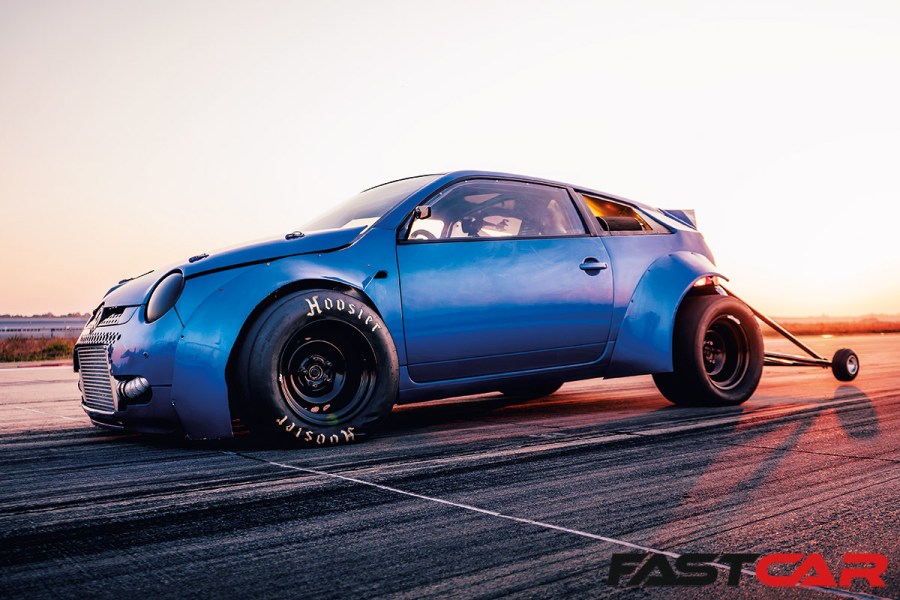Twin-engined and with a combined 1900hp, DOP Motorsport modified Volkswagen’s most economical hatchback, the VW Lupo, into one of Europe’s fastest drag cars – and there’s plenty more to come.
Image is a fickle thing in the car game. Reputations can be built and destroyed with a single product, re-shaping customer bases and changing expectations overnight. Who could have predicted, 20 years ago, that Porsche would end up being better known for SUVs than sports cars, or that Hyundai would set the bar for hot hatches, or stranger still, that Volkswagen’s most economical model would be a sought-after foundation for some of Europe’s fastest drag cars. No, really.
The Lupo 3L wasn’t designed with quarter-mile sprints in mind, but it certainly had the right ingredients. Developed during the early-2000s – the era of money-no-object Volkswagen engineering that also spawned the Phaeton and Golf R32 – it was a structural-level rework of the doe-eyed city car, laser-focused on weight, aerodynamics and efficiency. Wolfsburg set a target of 94mpg (3l/100km, hence the name), but it set a globe-touring Guinness World Record at almost 120mpg. Today, Romania’s DOP Motorsport is chasing some very different records with the same base model.
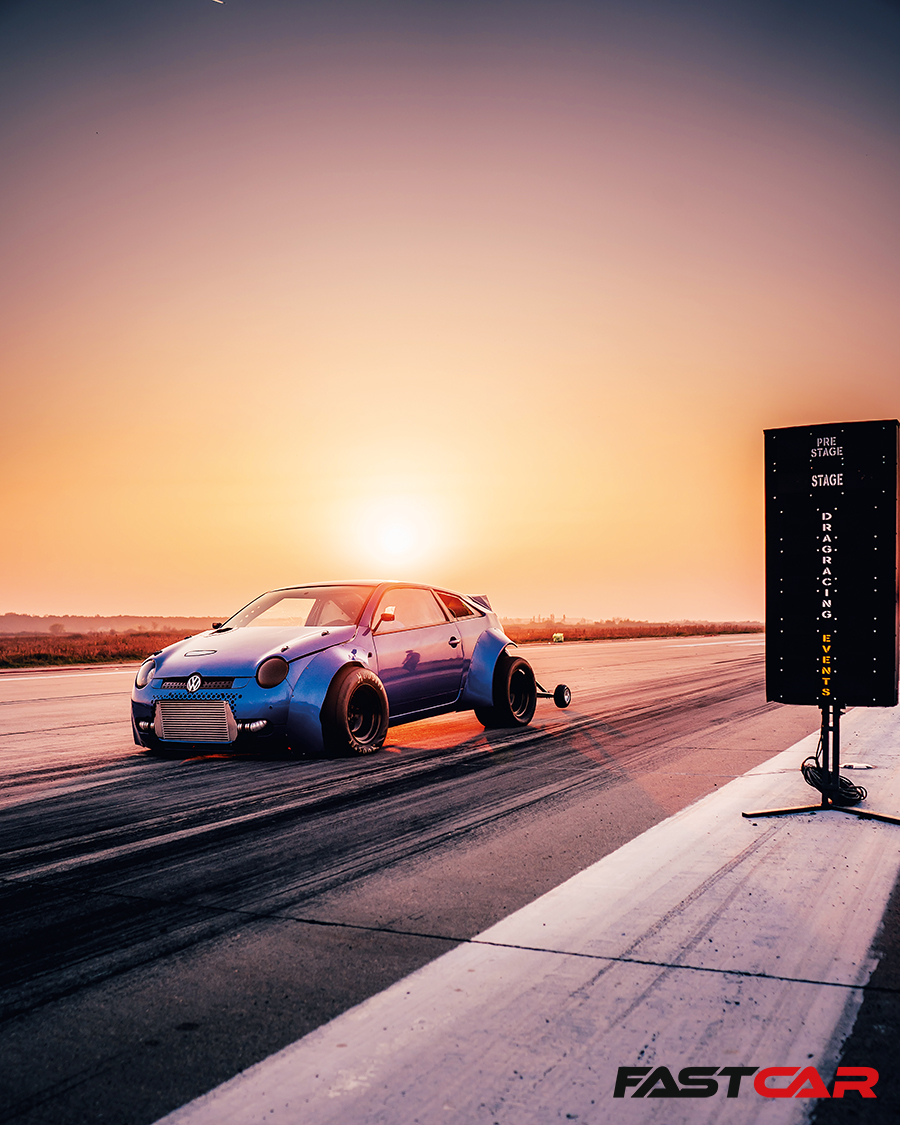
Why choose a VW Lupo as the base for a drag car?
“We wanted a lightweight car, because that is essential for drag racing,” the company’s founder, Silviu Ghita tells us, chuckling at the irony of packing two engines and 1,900hp of ethanol-swigging, flame-spitting anarchy into the once diesel-sipping hatchback. “The 3L is the only Lupo with aluminum for the doors, bonnet, boot lid and wings, so the body is very light. That’s a good start – all you need then is more power…”
Brute force is something DOP Motorsport is very familiar with. Set up as a hobby in 2010, its workshop just outside Bucharest has become a go-to for boundary-pushing engine tuning with some impressive records under its belt – Romania’s three fastest Volkswagens were all built here. This one, the quickest of the trio, can trace its roots back even further than its place of origin.
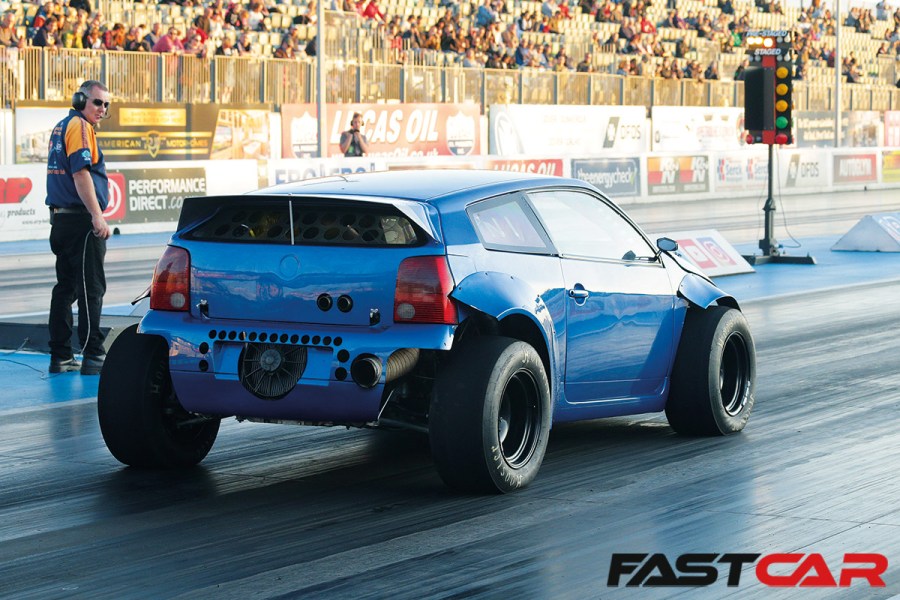
Silviu’s car history
“My first car was a Skoda Octavia RS, and that’s how I got involved with drag racing events,” he continues. “It had the same 2.0 TFSI engine as the Lupo, making 650hp at the front wheels, and I was running 11.4-second quarter miles at 217km/h (135mph) in that spec. That’s when I decided to install a second engine – another 2.0 TFSI – and got the time down to 10.0-seconds at 243km/h (151mph).”
The Lupo offered an opportunity to package similar hardware into a less weight-compromised platform. Silviu tracked down a well-kept 3L as donor, stripped it of anything that wasn’t mission critical, then set about putting Volkswagen’s gram-by-gram weight saving to more entertaining use. This was a quick car even with a single, mildly tuned 20-valve turbo up front. Effortlessly quick. But not quick enough, apparently.
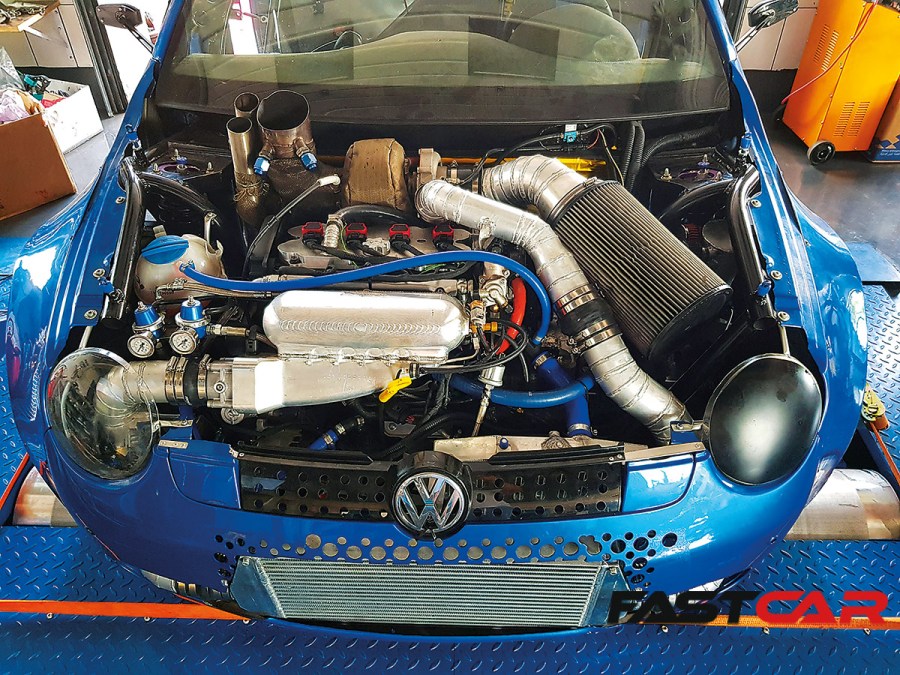
Not so much a VW Lupo anymore
Lupo owners won’t find much they recognize under the skin. The Octavia had highlighted a need to combine the highest possible strength with the lowest possible weight, and those demands were the limits of a structure that had been designed for 61hp. With its sights set on Europe’s fastest cars, the team at DOP designed and built a rigid tubular structure from lightweight chromoly, then fixed the 3L’s bodywork over the top.
“The panels are very light, so the body and chassis together only weigh around 200kg. I tried to make a bonnet from fiberglass, but it was a few grams heavier than the aluminum one because it had to be reinforced so it wouldn’t break. However, we realized the aerodynamics could be improved. The airflow under and over the body should join up about five meters behind the car, so we measured it and tapered the roof by 200mm to get that right,” explains Silviu.
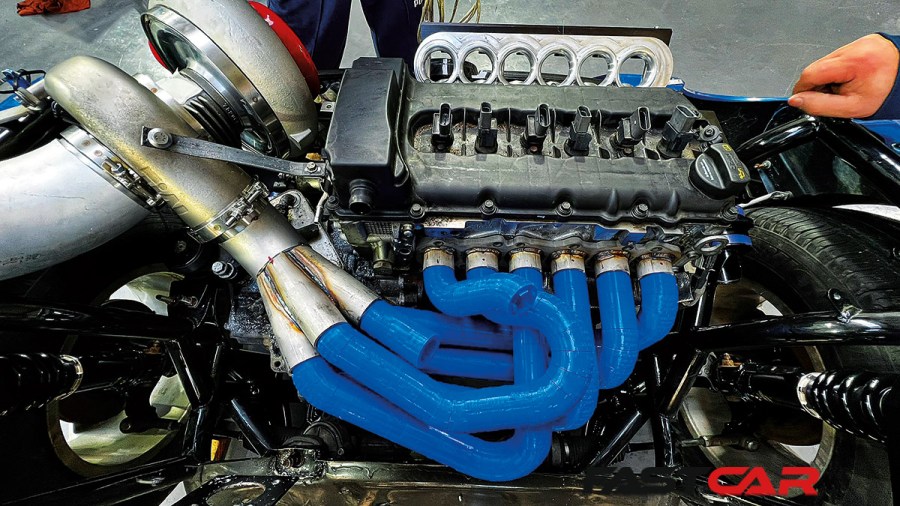
VW Golf R Mk6 Engines
That bespoke structure reduced the need to cram components into reluctantly small spaces, but there’s a lot going on here. There’s a Mk6 Golf R CDL-code 2.0-litre TFSI engine at each axle, chosen for their tougher timing belt setup instead of the later chain. These are built to an identical, and near-bulletproof, spec; a bottom end strengthened with a girdle kit then fitted with JE pistons and Tuscan rods, fixed to the head with ARP studs and paired with CatCams camshafts. Heavy-duty groundwork designed to withstand the boost of a Precision Turbo 6870 compressor.
“The 2.0 TFSI was my first choice – I had got it up to 650hp in the Skoda, so I knew the strengths and weaknesses really well,” explains Silviu. “As long as you get one with a timing belt, the block and cylinder heads are always the same, so you just need to reinforce the internals to take the extra boost. But the biggest weakness with these direct injection engines is a lack of fuel, and that’s what limits the power.”
Alleviating that bottleneck is no easy task. The engines use a combination of port and direct fuel injection; Audi S3 injectors in the combustion chambers and eight auxiliary 1,050cc injectors in a dual-plenum inlet manifold, which have a separate control unit. That’s a total of 12 injectors and three Bosch 044 fuel pumps per engine, and a resulting thirst for electricity that required a larger battery and stepping up from the stock 150-amp alternator to a 180-amp version. Even then, the belt slips at high loads.
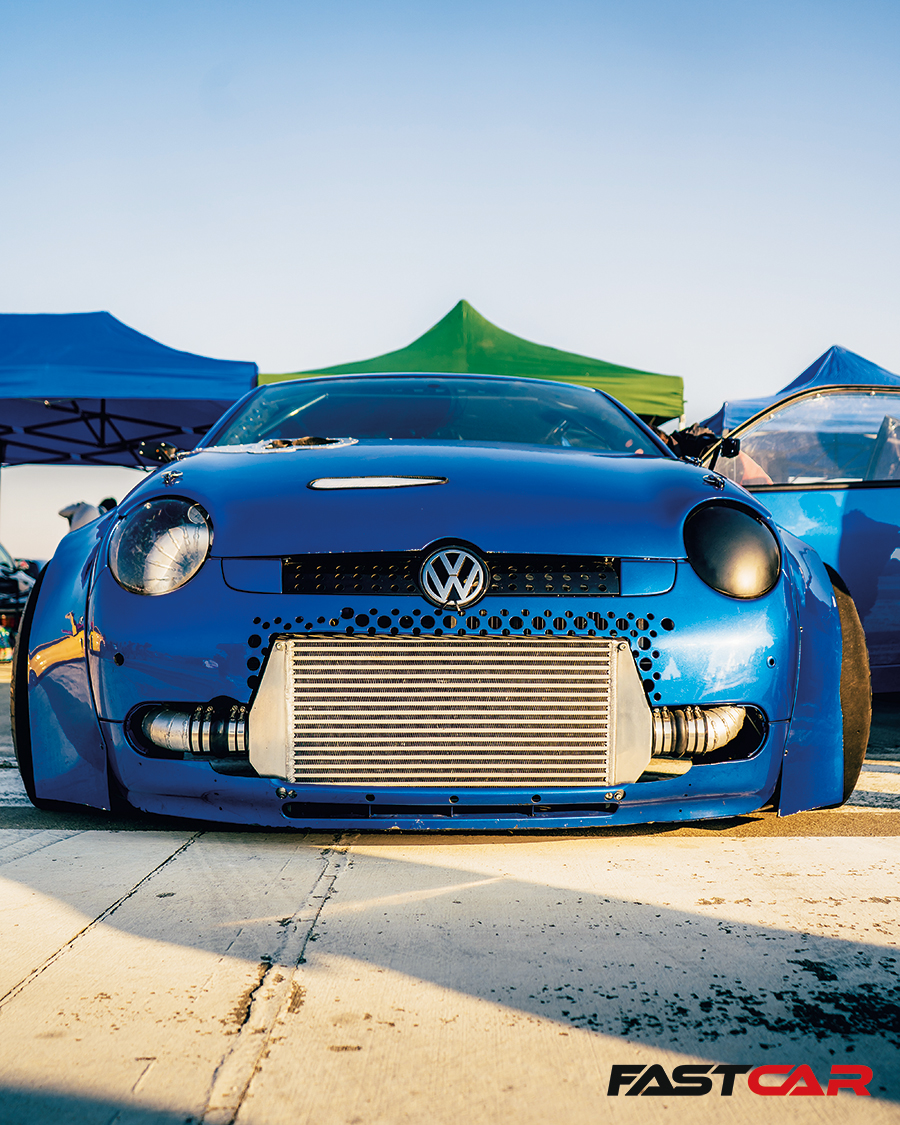
Parts from Bugatti
Silviu already has upgrades in mind: “I have started using Bugatti Veyron fuel pumps for street cars up to 900hp,” he tells us. “They are brushless and we use them with a brushless controller – two pumps per engine – with no issues. You can run them at a low speed and light load, so it doesn’t heat the fuel and they use less energy. A Bosch 044 draws 23-24 amps at full load, but a Veyron pump draws 13-14 amps at full load and has twice the capacity. They’re good for around 900hp on E85 fuel. Incredible pumps.”
Every component, and every gram, has a purpose. Within the tubular structure, the team carefully weaved boost pipework into the two engine bays, slotting an airbox into the passenger side window hole and a huge front-mount intercooler into the bumper – the rear engine runs a water-air cooler instead. Dialled up to full boost, that hardware puts out 950hp at each axle, snapping and popping flames through holes cut into the hatchback’s swollen bodywork. Weighing in at 1,350kg, or slightly less than the new Polo GTI, it’s putting out more than 1,400hp per tonne. In other words, roughly 300hp per tonne more than you’d get in a Bugatti Chiron, but with almost no filtering of that mechanical brutality when it’s put to use.
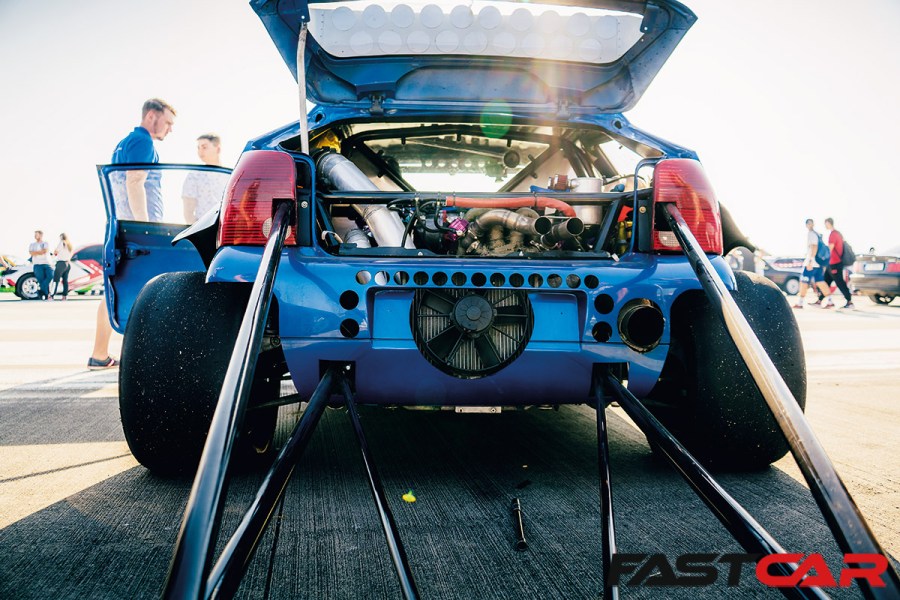
Two DSG gearboxes
With that in mind, there was no way the human driver could be allowed to limit progress. Having cut his teeth using manual transmissions in the Skoda, the twin-engined VW Lupo uses a six-speed DSG unit at each axle to minimize the shift time. Despite the power increase, mechanical upgrades are light, comprising an uprated clutch and Wavetrac differential to help put the power down. Each gearbox shifts independently, which means there’s no break in acceleration once it’s rolling.
“The DQ 250 transmission isn’t very strong – on a street car we usually break them at about 650hp,” shrugs Silviu, as if he’s describing a rumbling wheel bearing. “We have an advantage with a bi-motor car because the weight is distributed between two gearboxes. It’s like you’re running half the weight of the car at each one, though it doesn’t quite work that way. In a light car you won’t break even a weak gearbox like this one.”
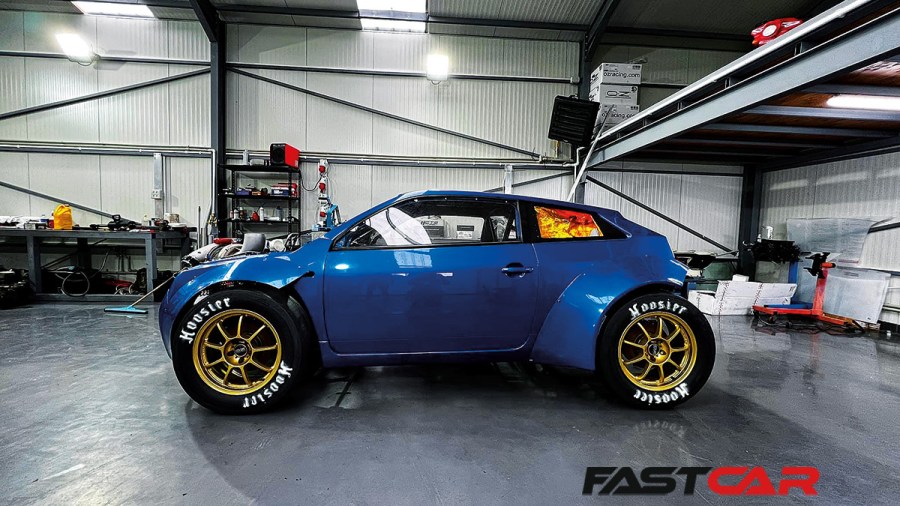
Chassis upgrades for the twin-engined VW Lupo
None of the Lupo’s suspension setup made it through the rebuild. The tubular chassis was designed around two sets of front suspension from the Mk5 Golf platform, converted to D2 Racing coilovers and with GTI brakes all round – ample stopping power for a drag car, but earmarked for replacement with something lighter in future. Arch flares at each corner cover 26-inch Hoosier tires wrapped around 15×10 steel wheels, custom-made by DOP using bands from three additional wheels per corner. It’s put some unusual strains on the mechanical parts behind, as Silviu explains.
“We’ve converted it to electric power steering, using parts from a Mk5 Golf. It is drivable without it, if you’re on street tires, but the part-deflated Hoosiers are very different. If you turn the wheel, it pulls back to the center, which isn’t safe,” he says.
“However, the driveshafts are completely stock. I bought some upgraded shafts but I haven’t installed them yet, because they’re twice as heavy. If I break the standard driveshafts then I’ll fit the others, but for now I don’t want to add any kilograms unless it’s completely necessary.”
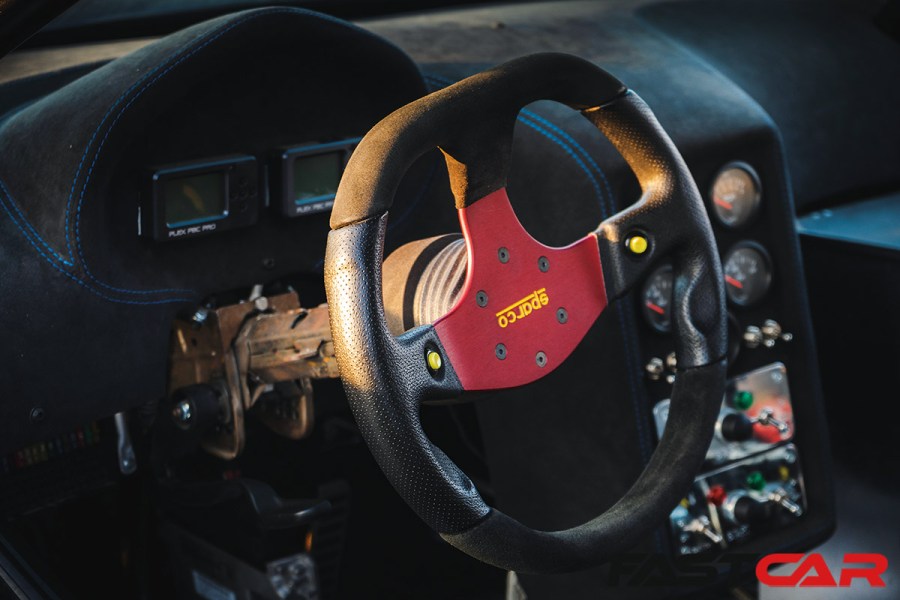
Interior modifications on the twin-engined VW Lupo
That’s also true of the cabin. Separated from the rear engine by a metal bulkhead, it’s an environment stripped back to only the most essential components. A fiberglass dashboard, trimmed in non-reflective Alcantara, puts duplicate oil gauges and boost controllers within a glance, while the dual DSG shifters and compact Sparco wheel are positioned close to the ultra-light 23kg bucket seat. Wolfsburg was obsessive about trimming weight, but a stock Lupo 3L would feel almost Phaeton-like by comparison.
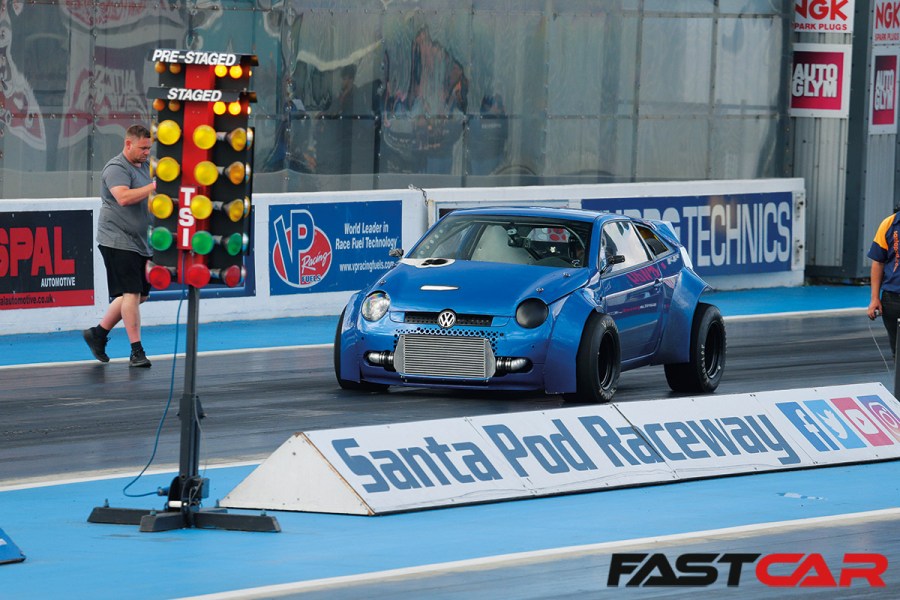
Quarter-mile drag racing
The performance on offer in this twin-engined VW Lupo is every bit as wild as the car’s presence implies. Two years in the making, the Lupo put in a first run while de-tuned to “just” 600hp per engine, putting down an 8.7-second quarter mile at 273km/h (169mph) on an untreated track. Achieving high power reliably has been relatively straightforward with a familiar powertrain. The challenge, Silviu says, is putting it down effectively.
“I put the engines up to 950hp each at Santa Pod, but I didn’t manage to improve the ET because we couldn’t get a clean pass in six runs,” he tells us. “The main problem was wheel spin and the gearboxes were not changing as fast as they could. We fitted wheelie bars in the last race to stop the front from losing traction so hard and made an 8.7-second pass at 1,200hp. It feels like a walk to the grocery store – the car is so stable that a pass like that feels like way over ten seconds. Then you look at the timeslip and realise how fast it really is.”
Of course, the team hasn’t taken a soft approach to curing those issues. It spent last year building another Lupo 3L, this time with a single 835hp 2.0 TFSI and DSG setup and testing how to get the shift strategy perfect. Although it’s technically a side project, it’s impressive in its own right; at 8.8 seconds and 263km/h (163mph), it’s second only to the blue car as Romania’s fastest Volkswagen.
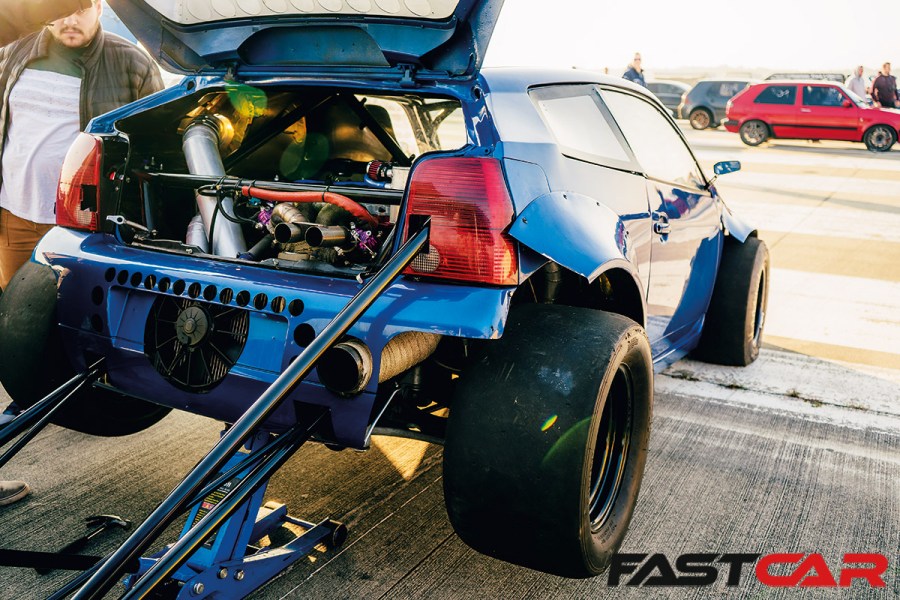
What’s next for the twin-engined VW Lupo?
But the next chapter for the twin-engined VW Lupo is more a fresh start than an ongoing evolution. As you read this, DOP Motorsport has two 3.6-litre VR6 engines under construction for the already lunatic hatchback, and both are boosted by a GTX55 turbo and nitrous with a target of between 1,500hp and 1,800hp per axle. For context, a street-legal project with just one of those engines has shown it’s capable of sprinting from 100-200km/h (60-120mph) in 3.3 seconds. Packing more than twice as much power into a much lighter body is a borderline terrifying concept.
For Silviu, though, it’s another way to push the boundaries. “We all like building fast cars and special projects, and I don’t think that will ever change. Drag racing is all about the small details. You’re always fighting for those last 0.05 seconds, combining a good driver and extreme reaction speeds with fine tuning – of launch control, the amount of power you can put down, when to shift gear, and so on. There are so many variables, and so much data to analyze, that you can cut 0.1 seconds compared to a previous run just by getting that right.”
Conclusion
Having reached the top, the ongoing challenge is staying there. Drag racing wasn’t on Volkswagen’s radar as engineers trimmed the Lupo’s weight for maximum efficiency. But Shoehorning near-unimaginable horsepower into that platform should push DOP Motorsport further into the upper echelons of Europe’s drag scene, strengthening a very different reputation for Wolfsburg’s most efficient car.
Words: Alex Grant. Photos: DOP Motorsport.

